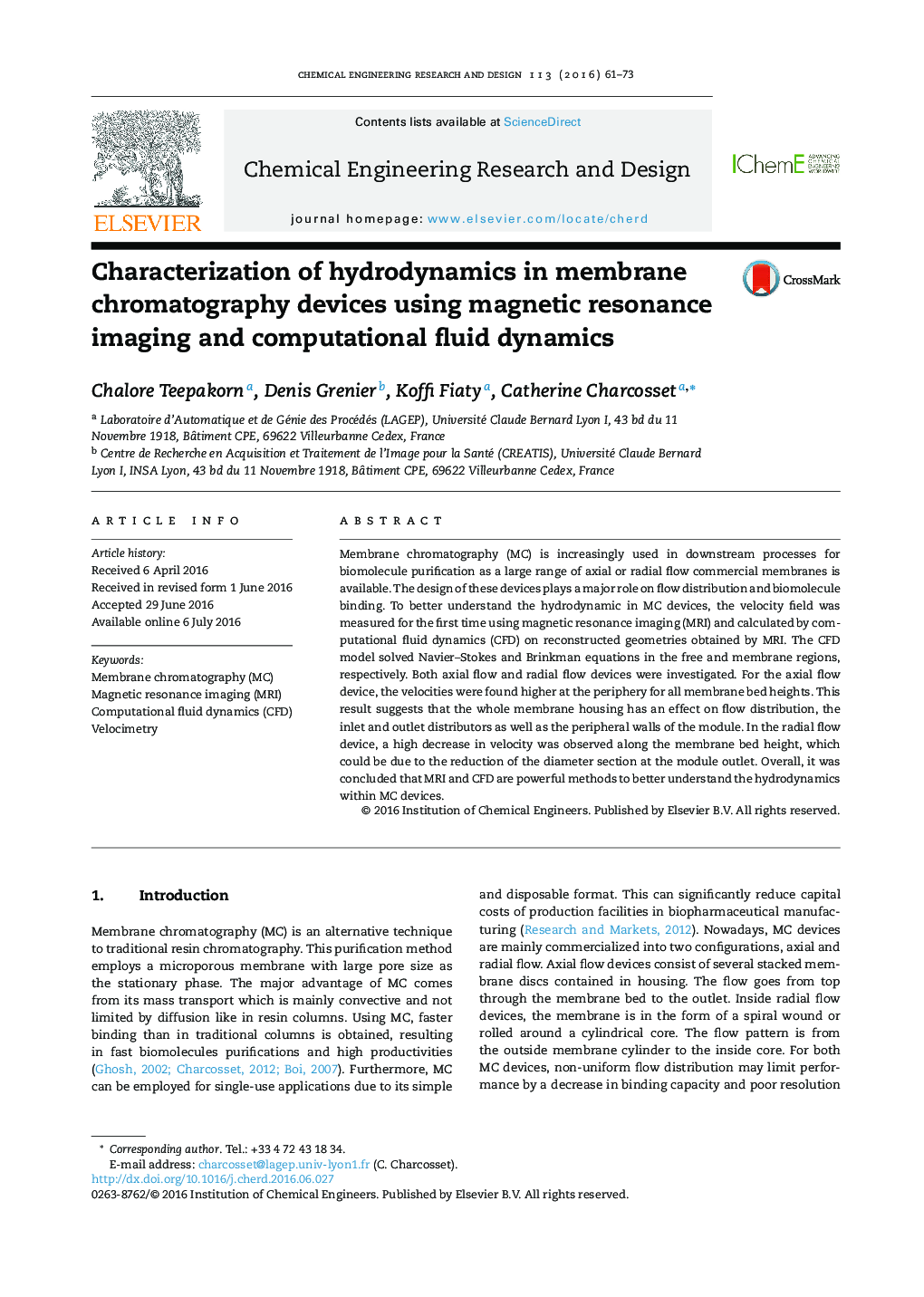| Article ID | Journal | Published Year | Pages | File Type |
|---|---|---|---|---|
| 620319 | Chemical Engineering Research and Design | 2016 | 13 Pages |
•The design of membrane chromatography devices has a major role on flow distribution.•The velocity field was measured experimentally by magnetic resonance imaging (MRI).•It was calculated by computational fluid dynamics (CFD) on reconstructed geometries.•Two membrane chromatography devices were investigated: axial and radial flow devices.•MRI and CFD were found to be powerful methods to better understand the hydrodynamics.
Membrane chromatography (MC) is increasingly used in downstream processes for biomolecule purification as a large range of axial or radial flow commercial membranes is available. The design of these devices plays a major role on flow distribution and biomolecule binding. To better understand the hydrodynamic in MC devices, the velocity field was measured for the first time using magnetic resonance imaging (MRI) and calculated by computational fluid dynamics (CFD) on reconstructed geometries obtained by MRI. The CFD model solved Navier–Stokes and Brinkman equations in the free and membrane regions, respectively. Both axial flow and radial flow devices were investigated. For the axial flow device, the velocities were found higher at the periphery for all membrane bed heights. This result suggests that the whole membrane housing has an effect on flow distribution, the inlet and outlet distributors as well as the peripheral walls of the module. In the radial flow device, a high decrease in velocity was observed along the membrane bed height, which could be due to the reduction of the diameter section at the module outlet. Overall, it was concluded that MRI and CFD are powerful methods to better understand the hydrodynamics within MC devices.
Graphical abstractFigure optionsDownload full-size imageDownload high-quality image (239 K)Download as PowerPoint slide
